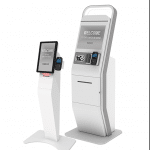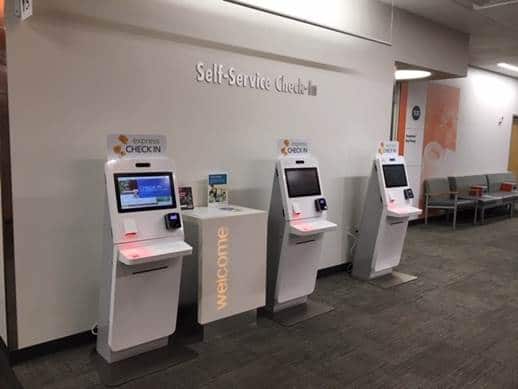Patient Kiosk Check-In About
We are an independent site covering the products and news relative to the Patient Kiosk Check-In world.
Areas of expertise and interest include:
- EPIC Welcome Kiosks — these have been the standard by which others are judged. Major deployers such as Kaiser Permanente certainly raise their profile
- Cerner EHR — still in process for VA?
- Meditech
- As well as cloud-based patient check-in systems such as Phreesia
Here is a historical case study for Kaiser
Basic Patient Check-In and Patient Co-Payments
Kaiser Permanente
Objectives
Kaiser Permanente (KP) is a large, nonprofit, integrated health plan based in Oakland, California. Through its Kaiser Foundation Hospitals and their subsidiaries, KP serves about 8.7 million members in nine states and the District of Columbia, including a sizable presence in the Southern California (SCAL) region . Two years ago, as part of an initiative to design the “Front Office of the Future,” KP SCAL began looking at kiosks as a way to enhance ambulatory services. They developed a vision that would use kioskbased selfservice as a complement to KP HealthConnect, the name of the organization’s electronic health record system.
Prior to rolling out kiosks at a number of their SCAL facilities, KP offered a traditional checkin experience in which members lined up at the receptionist’s desk to check in. Changes to demographic information were communicated verbally, and copays were collected at the window. The process was not marked by any major breakdowns, but occasionally long lines would form during peak hours of operation, or if one member required special attention for questions or complex transactions. The verbal communications sometimes led to misspellings or other data entry errors, and copays were not always collected reliably. Also, traditional facetoface checkins did not always work well for members who spoke little or no English.
Solution
In 2007, KP tested the available technologies and surveyed members on their willingness to use a kiosk. The organization worked extensively with hardware vendors to select the right enclosure and technical components, as well as with its own clinical software system vendor to ensure backend integration with the registration, scheduling, billing, and reporting tools.
Positive feedback from members led to an expanded pilot project in June 2008.By the end of the year, about 100 selfservice kiosks were deployed in 60 medical clinics, making Kaiser the largest user of health care checkin kiosks in the country.Kaiser has plans to roll out an additional 200 kiosks in 2009.
The kiosks are used by members to:
- Checkin for scheduled appointments;
- Update demographic information;
- Pay copay and deductible with a credit or debit card; and
- Receive wayfinding assistance for directions to their appointment.
These functions account for the bulk of tasks and transactions that are typically performed through staff at the checkin counter. All of the tasks can be performed with the aid of language translation. Members can choose from one of six languages: English, Spanish, Chinese, Tagalog, Armenian, and Vietnamese.
Results
In 2007, a patient satisfaction survey was conducted. Patients who checked in with receptionists were interviewed to learn about their awareness level of the new selfservice checkin option. Patients who checked in with a kiosk were asked about their experience using this tool. Member reactions to the KP SelfService Kiosks were very positive. The vast majority of members who checked in using the kiosk had a successful experience, with over 75 percent of members feeling that checking in through the kiosk is faster than checking in through a receptionist.
About 60 percent of members report that the reason that they used the kiosk was because the line was shorter.More than 90 percent of members who used a kiosk to check in are able to do so successfully without needing any assistance, and the same number also report that they felt comfortable with the level of privacy offered by the kiosk.
Kiosk utilization numbers have not yet been baselined, as the focus in 2008 was to learn how to deploy and support kiosks across the KP Southern California region. Utilization is noticeably higher during peak hours, though, suggesting that the kiosks are fulfilling their role of providing additional capacity as needed.
Department administrators are also pleased with the kiosks. Before the introduction of the kiosks, members requiring special attention may not have received all the assistance they needed, as staff tried to check in members as quickly as possible in order.


